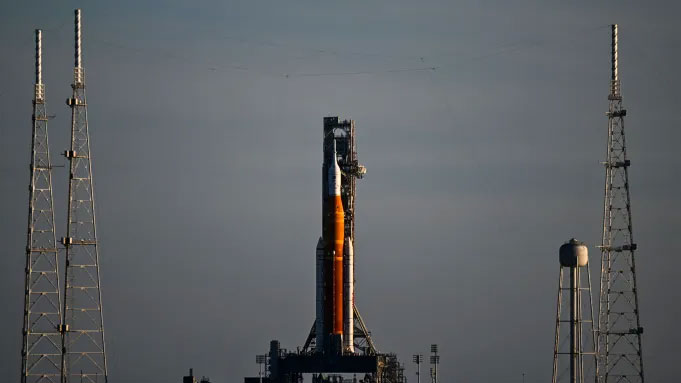On November 8, the National Aeronautics and Space Administration (NASA) announced another delay in the launch schedule for the Artemis 1 mission, as Tropical Storm Nicole approaches the East Coast of Florida.
As of now, the launch of the Artemis 1 mission has been postponed four times due to technical issues and weather conditions.

The Artemis 1 rocket system on the launch pad at Kennedy Space Center in Cape Canaveral, Florida (USA) on September 6, 2022. (Photo: AFP/TTXVN)
NASA’s statement clarified that with Tropical Storm Nicole intensifying, “NASA has decided to adjust the target date for Artemis 1, aiming for Wednesday, November 16, to allow staff to safely return to work and complete assessments after the storm passes.” The next backup launch date is planned for November 19.
The National Hurricane Center reported that Tropical Storm Nicole is expected to strengthen as it moves toward the Bahamas, before making landfall in Florida on the night of November 9 (local time). A storm warning has been issued for the area near Kennedy Space Center in Florida, where the Orion spacecraft for the Artemis 1 mission is set to launch to the Moon.
Currently, the Space Launch System (SLS)—the most powerful rocket ever built by NASA, standing at 30 stories tall—and the Orion spacecraft have been moved to Launch Pad 39B at Kennedy Space Center in preparation for deployment. Experts are concerned that this 98-meter tall rocket, valued at several billion dollars, could be damaged by Tropical Storm Nicole. However, NASA rocket development experts have stated that this is an important test for the SLS system. According to NASA, the SLS is designed to withstand winds of 136.7 km/h, heavy rain, and the Orion spacecraft’s hatches are constructed to prevent water intrusion.
Artemis 1 is the first flight of the SLS, aimed at placing the Orion spacecraft into orbit, with the goal of testing the readiness of these vehicles to transport astronauts to the Moon. Following the Artemis 1 mission, astronauts will embark on missions Artemis 2 and Artemis 3 in 2024 and 2025.
NASA aims to establish a lunar space station called Gateway and maintain a long-term human presence on the Moon before executing a mission to send humans to Mars by 2030.


















































